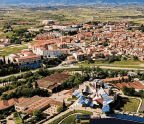ON THE RISE: low- and no-alcohol wine

Like Brexit, Trump and Marmite, some things in life seem destined to be controversial. Two of them came together recently when the UK’s Football Association decreed that winners of the 2019 FA Cup, in a break with tradition, would not be awarded Champagne but ‘a non-alcoholic Champagne’ alternative. Needless to say, the announcement provoked much coverage and debate.
Low- and no-alcohol wine is something of an enigma. Legally, it doesn’t exist – officially, ‘wine’ should contain a minimum of 8% alcohol by volume (abv) unless specifically exempted. It tends to generate heated opinion. Traditionalists decry it as a needless abomination; others see it as an exciting part of wine’s future. Many rightly criticise lacklustre quality from examples to date.
There’s also a lack of clarity about what ‘low and no alcohol’ actually means, not helped by a confusing set of official UK designations, with four different terms used to. Much has been written about ‘lower-alcohol’ wines (between 6%-11% abv). But this piece will focus on wines of 0.5% abv or less (officially ‘de-alcoholised wine’, though I’ll refer to it as ‘low and no’ as per general parlance). Evidence indicates this category is increasingly the focus for producers, retailers and wine drinkers.
You’re reading a preview, subscribe to read more.
Start your free 30 days





